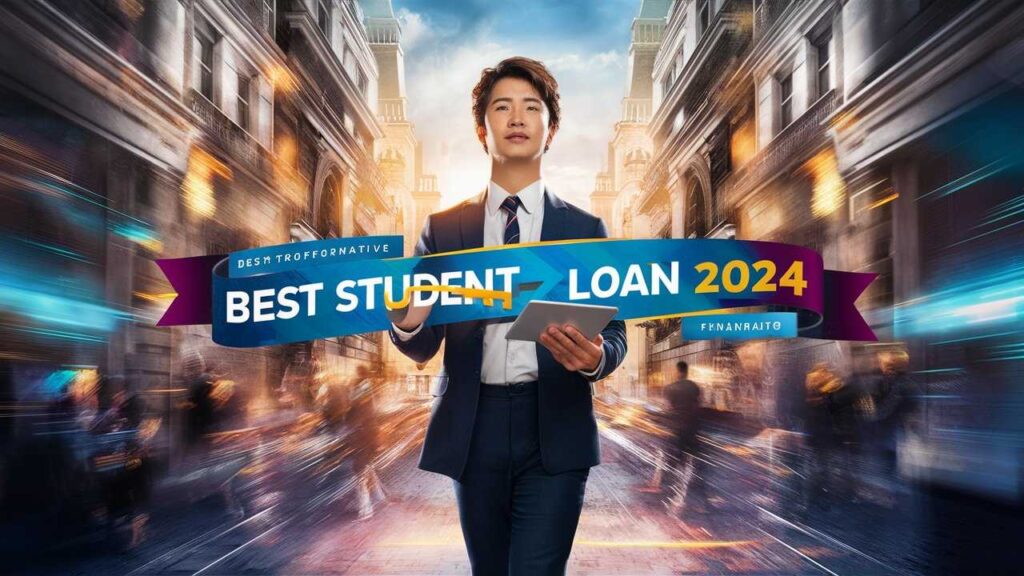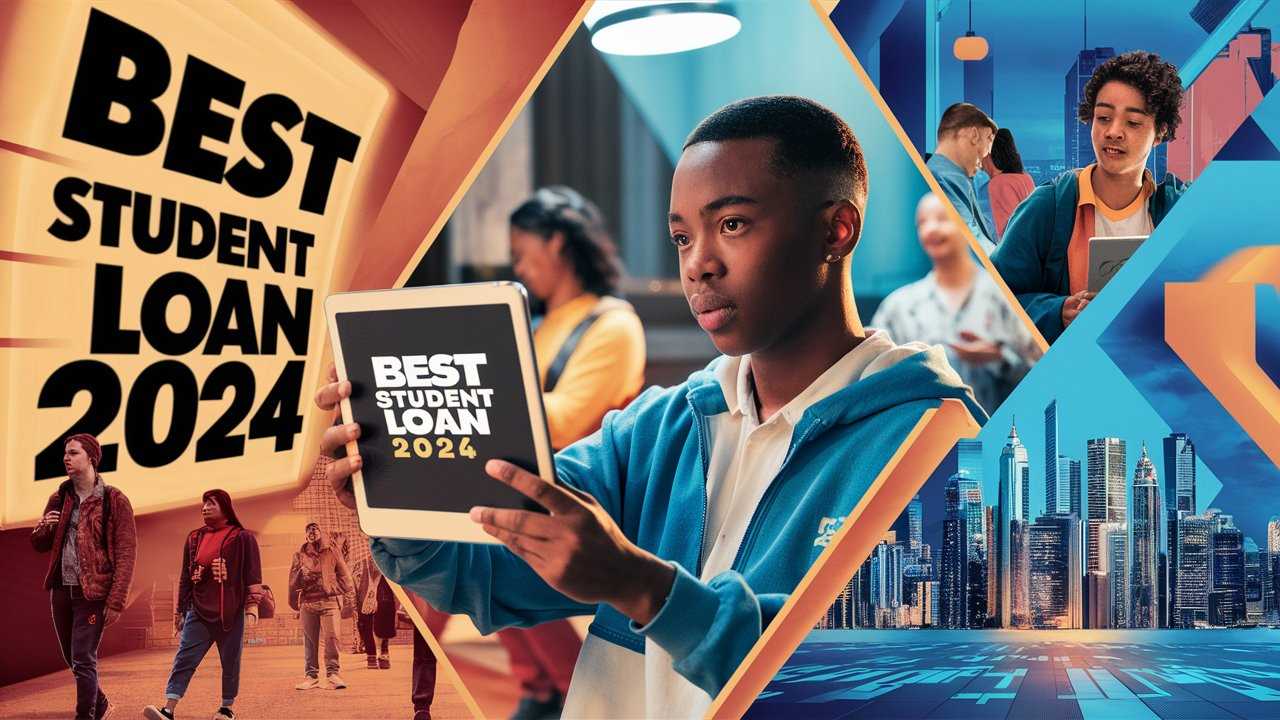The Student Loan Game – Why 2024 Is Different
Welcome to the wild world of student loans in 2024. If you thought navigating the maze of interest rates, repayment plans, and forgiveness programs was fun before, buckle up. This year, we’re dealing with fresh regulations, fluctuating rates, and more options than ever. It’s a lot to take in, but don’t worry👩🎓we’re here to break it down, keep it light, and hopefully, save you a few dollars (and headaches) along the way.

What Is a Student Loan, and Why Should You Care?
Student loans are like that awkward family member👩🎓you may not want them, but sometimes you just can’t avoid them. In short, a student loan is money you borrow to pay for college or university, and unlike a scholarship or grant, you have to pay it back (sad trombone). Why should you care? Well, unless you have a secret stash of gold coins lying around, student loans might be the only way to get through school without living on instant noodles forever.
The 2024 Student Loan Landscape: What’s Changed?
New regulations, same old confusion
Ah, regulations. Just when you think you’ve got a handle on them, the government decides to switch things up. In 2024, we’re seeing some new rules that aim to help students, but of course, they come with a side of confusion. Some loans are easier to access, while others come with stricter requirements. And don’t get us started on the paperwork.
Interest rates: the good, the bad, and the ugly
Interest rates in 2024 are doing their best rollercoaster impression. Some rates are lower than they’ve been in years, which is great news for borrowers. But beware👩🎓others have crept up, especially in the private loan market. The trick is figuring out which one will cost you less over time, but that’s easier said than done.

Types of Student Loans: Which One Is Right for You?
Federal vs. private loans: What’s the deal?
Federal loans are like the tried-and-true best friend👩🎓they’re reliable, they come with perks, and they don’t usually surprise you with hidden costs. Private loans, on the other hand, are the wild cards. They can be a good option if you need more money, but they often come with higher interest rates and less flexible repayment terms. Choose wisely, young padawan.
Subsidized vs. unsubsidized loans: A tale of two interests
Subsidized loans are the holy grail of federal loans. The government covers your interest while you’re in school, meaning less debt piling up. Unsubsidized loans? Not so much. Interest starts accruing from day one, and before you know it, that $5,000 loan has ballooned into something scarier.👩🎓
PLUS loans: The good, the bad, and the parent trap
PLUS loans are like the Hail Mary pass of Student loans. They’re federal, but they require a credit check, and they’re often taken out by parents. The good news? You can borrow enough to cover whatever your other loans don’t. The bad news? The interest rates are usually higher, and your parents are on the hook.

The Best Federal Student Loans in 2024
Why federal loans still reign supreme
Federal loans are still the champions of the student loan world. Why? They come with lower interest rates, better repayment options, and even forgiveness programs. Plus, they’re not out to fleece you with hidden fees. It’s like borrowing from a friend who actually wants to see you succeed.👩🎓
Direct Stafford loans: Your new BFF
If you’re looking for the best bang for your buck, Direct Stafford loans are the way to go. They come in both subsidized and unsubsidized forms and are available to most students, regardless of financial need. Plus, they have relatively low-interest rates and flexible repayment options. What’s not to love?
Perkins loans: Are they still a thing?
Perkins loans were once the darlings of the student loan world, offering low-interest rates to students in serious financial need. But in 2024, they’re a rare breed. The program was discontinued in 2017, but if you took out a Perkins loan back in the day, you’re still responsible for paying it off.👩🎓

Private Student Loans: Who’s Offering the Best Deals?
Why private loans aren’t as scary as they seem
Private loans get a bad rap, but they’re not always the villain in your financial story. Sure, they come with higher interest rates and fewer perks, but if you’ve maxed out your federal options, they can be a lifesaver. The key is shopping around to find the best deal👩🎓and making sure you read the fine print.
Top private lenders in 2024 that won’t make you cry
In 2024, a few private lenders are standing out from the crowd with competitive rates and borrower-friendly terms. Look out for companies like SoFi, Earnest, and College Ave👩🎓they’re offering some of the best deals without making you want to throw your loan paperwork out the window.
Fixed vs. Variable Interest Rates: The Ultimate Showdown
Which one saves you money in the long run?
Fixed interest rates stay the same throughout the life of your loan, while variable rates fluctuate with the market. In theory, a variable rate could save you money if interest rates drop, but it’s a gamble. Fixed rates offer stability, so if you’re risk-averse, they’re probably your best bet.
The risks and rewards of going variable
Variable rates can be tempting because they often start lower than fixed rates. But remember: what goes down can also go up. If you’re lucky, rates will stay low, and you’ll save a bundle. But if they spike, you could end up paying way more in the long run.👩🎓

How to Compare Student Loan Offers Without Losing Your Mind
APR, origination fees, and other fun financial jargon
When comparing loans, it’s easy to get bogged down in the jargon. APR, or annual percentage rate, gives you a more complete picture of the cost of a loan than just the interest rate. And origination fees? Those are the sneaky little charges lenders tack on just for giving you the loan in the first place.
Tools and websites to make your life easier
Luckily, there are plenty of tools and websites to help you compare loan offers without frying your brain. Websites like Credible and LendEDU allow you to compare rates and terms side by side, making it easier to find the best deal. Just plug in your info and let them do the hard work.👩🎓

Hidden Fees in Student Loans: Sneaky Costs to Watch For
The fine print you can’t afford to ignore
It’s easy to overlook the small print when you’re in the middle of loan shopping, but those hidden fees can add up quickly. Origination fees, late payment penalties, and even prepayment penalties are just a few of the sneaky charges that can catch you off guard.
How to avoid getting nickel-and-dimed
To avoid these sneaky fees, always read the fine print before signing on the dotted line. And if you’re unsure about a particular fee, don’t be afraid to ask your lender for clarification. It’s better to ask a “stupid” question now than pay for it later.👩🎓
People Also Ask
Which student loan is the best overall?
The best overall student loan is typically the Direct Subsidized Loan offered by the federal government. It features low interest rates and the benefit of not accruing interest while you’re in school, making it a top choice for students who qualify based on financial need.
Which bank is best for student loans?
SoFi and Earnest are often considered the best private lenders for Student loans, thanks to competitive rates, flexible repayment terms, and no fees. However, the “best” bank depends on your personal financial situation and creditworthiness.
Which student loan type has the most benefits?
Federal loans, particularly Direct Subsidized Loans, have the most benefits. They offer lower interest rates, deferment options, and access to forgiveness programs. They also don’t accrue interest while you’re in school.

What is the most I can get for a student loan?
For Direct PLUS Loans, there is no fixed borrowing limit; you can borrow up to the cost of attendance, minus any other financial aid received. Federal loan limits for undergraduate students vary based on dependency status, typically capping at around $57,500.
What is the highest student loan amount?
For graduate or professional students using a Direct PLUS Loan, you can borrow up to the full cost of attendance, meaning some students take out loans of six figures, depending on the cost of their program.
What degree has the most student loans?
Medical degrees tend to lead to the highest student loan debt, with students often borrowing $200,000 or more to complete their education. Law degrees and graduate business degrees also tend to come with significant debt.
How long do you have to pay student loans?
The standard repayment term for federal student loans is 10 years, but depending on the repayment plan, it can range from 10 to 30 years. Private loans typically have terms between 5 and 20 years.
What is the most popular student loan repayment plan?
The Standard Repayment Plan is the most popular for federal loans, offering a fixed monthly payment over 10 years. However, Income-Driven Repayment (IDR) plans are gaining popularity due to their flexibility.
Which loan should you try to pay off most quickly?
Pay off high-interest private loans first. These loans usually don’t come with federal protections or benefits, and their interest rates are often higher than federal student loans.
What is the largest source of student loans?
The U.S. Department of Education is the largest source of student loans, offering federal loans like Direct Subsidized, Unsubsidized, and PLUS loans, which make up the majority of student borrowing.
What type of loan is best for education?
Federal loans are generally the best for education due to their borrower protections, lower interest rates, and flexible repayment options. Direct Subsidized Loans are ideal if you qualify.
Who gives out most student loans?
The federal government is the largest provider of student loans in the United States. Private lenders also offer loans, but they account for a much smaller portion of overall student debt.
Are student loans better?
Federal student loans tend to be better than private loans because they offer lower interest rates, income-based repayment options, and loan forgiveness programs. Private loans may be needed to cover gaps but usually come with fewer benefits.
Which student loan option is best?
The Direct Subsidized Loan is the best option for undergraduate students who qualify because of its low-interest rate and the fact that the government pays the interest while you’re in school.
What is the most common type of student loan?
The most common type of student loan is the Direct Unsubsidized Loan, which is available to both undergraduate and graduate students, regardless of financial need.
What type of bank is best for a student?
Credit unions and online banks like Ally or Chase are often the best for students. They offer low or no fees, decent interest rates, and sometimes perks specifically aimed at students.
How much is student loan interest?
For federal loans disbursed in 2024, interest rates vary. Direct Subsidized and Unsubsidized Loans for undergraduates have rates around 5.50%, while PLUS loans for graduates or parents have rates closer to 8.05%. Private loan interest rates can vary widely based on creditworthiness.








